Currency Names That Still Point to Silver Money
‘The major monetary metal in history is silver, not gold.’
– Nobel Laureate Milton Friedman
Unbeknownst to many, silver has been used more times as money in history than gold. It was only towards the end of the 19th century that silver was systematically de-monetised from the monetary system by the United States and Great Britain.
The evolution of currency is a fascinating reflection of our economic history, and the names of certain currencies continue to bear traces of their origins rooted in silver money. From the early days when central banks held vast reserves of gold and silver coins to the modern era of paper money, the influence of silver as a standard of value has left an indelible mark.
In this article, we show you how the names of major existing currencies today were derived from their silver roots. Their link to their silver past reminds us all that silver is money and money should be a store of value cherished for its scarcity.
The Dollar
The word 'dollar' was derived from an ancient European silver coin known as the Thaler.
The Thaler silver coin was used throughout Europe for almost four hundred years from as early as the 15th century.
The word 'thaler' is an abbreviation of its longer name - Joachimsthaler, used for coins minted from silver mined in the city of Joachinsthal in Bohemia.
The word 'thal' means "valley" in German. So thaler literally means something that comes from the valley.
Over the years, the word thaler reached other countries and it evolved into variants such as the Taler (Scandinavia), Tolar (Slovenia), Daalder (Dutch) and the Dollar (English).
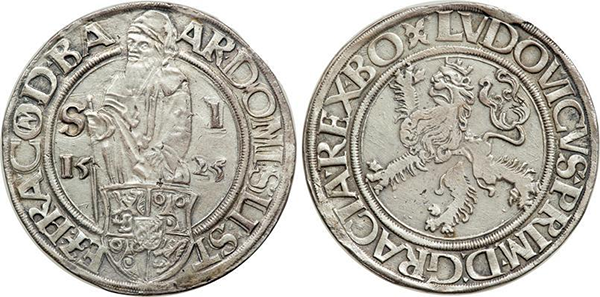
1525 Joachimsthaler of the Czech Kingdom
Silver Dollars
The term "silver dollar" typically refers to a coin that has a face value of one dollar and is made primarily of silver.
Morgan Silver Dollar
One of the most famous silver dollar coins in the United States is the Morgan silver dollar, named after its designer, George T. Morgan. It was minted from 1878 to 1904, and again in 1921. The Morgan silver dollar is composed of 90% silver and 10% copper.
Peace Silver Dollar
Another notable silver dollar coin in U.S. history is the Peace silver dollar, minted from 1921 to 1935. The Peace dollar also contains 90% silver and 10% copper.
The Peso
The peso was a name given in Spain to a silver coin know as the 'piece of eight' (peso de ocho) or more famously known as the Spanish dollar.
It had a diameter of 38mm, weighed 27.468g and had a fineness of 93%.
It was called 'piece of eight' because the face value of the silver coin was 8 reales - the currency unit in Spain for many centuries.
The Spanish dollar was minted from the middle of the 16th century and was widely adopted as the first world currency by the late 18th century. It was used for trade in Europe, the Americas and the Far East.
It's popularity also saw the silver coin become legal tender in the United States until the middle of the 19th century. Many of the currencies we have today (e.g. U.S dollar, Japanese Yen, Chinese Yuan, Philippine Peso) were initially based on the Spanish dollar.
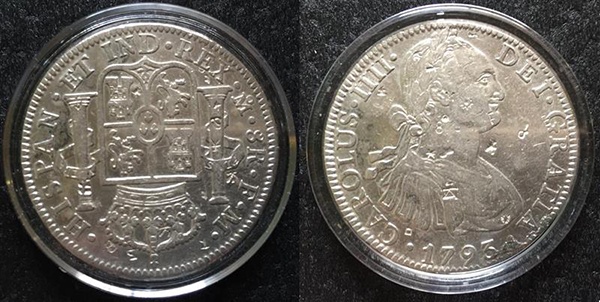
A silver 8 real coin of King Charles IV of Spain
The Yuan
The Chinese yuan was originally introduced as a silver coin in 1889. First produced by the Guangdong mint, the Yuan silver coin had equal value to the widely circulated Mexican peso silver coin.
These silver coins were used in everyday trade from the early 16th century. It was common for payment from silk to porcelain to be made with silver coins.
In Mandarin, 'yuan' literally means a "round object" or "round coin". The names of the Japanese and Korean currencies, the yen and the won respectively, are derived from the same Chinese yuan character.
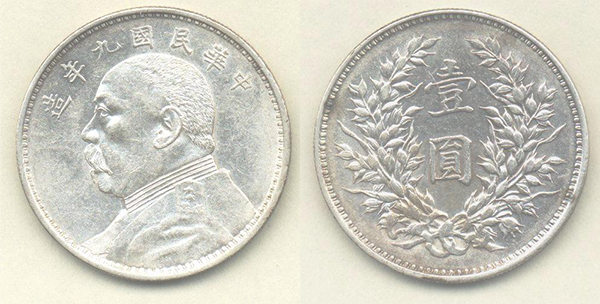
1920 silver yuan portraying Yuan Shikai
The Pound Sterling
The official name of the United Kingdom currency, pound sterling, is derived from a small Norman silver coin minted in the 11th century.
During this period, these silver pennies were produced with a consistent weight of silver leading to the equating of 240 pennies to a pound of silver.
The Norman silver penny was observed to have held a consistent uniform weight of 22.5 grains of silver for more than two centuries. This gave the penny a reputation of being a strong and fixed currency which could be used reliably for trade even abroad.
This is possibly how the word 'sterling' (derived from the Middle English word 'ster' meaning 'strong', 'rigid' or 'fixed') was used to describe the currency over time.
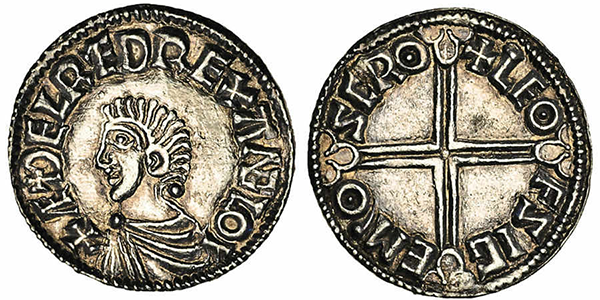
An Anglo-Saxon "Long Cross" silver penny
The Rupee
Several countries such as India, Pakistan, Sri Lanka, Nepal and Mauritius use the rupee as the name of their currencies.
The origin of the word 'rupee' comes from the Sanskrit word 'rūpya' which means "wrought silver, a coin of silver".
The rupiah, used by Indonesia, is also a derivative of the word 'rūpya'.
During his brief rule of northern India between 1540 and 1545, Emperor Sher Shah Suri issued a silver rūpya coin which weighed 178 grains. This silver coin remained in use during the Mughal Empire period and later during the British rule.
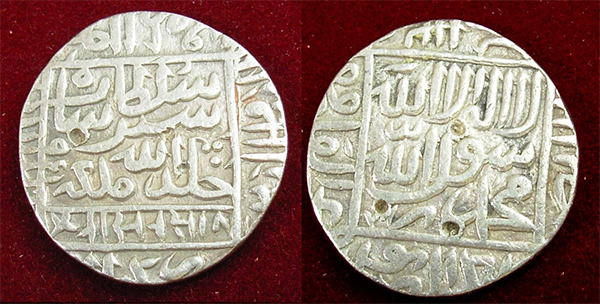
Rupiya issued by Sher Shah Suri
The Dinar
The term "dinar" can be traced back to silver coins produced during Roman times known as the "denarius." The denarius was widely used in the Roman Empire and was considered the standard currency during that time. It became the backbone of Roman silver coinage and was used in everyday transactions as well as in trade.
Over centuries, the term "denarius" evolved into various forms, including "dinar," which is still used today in certain countries as the name of their currency. These countries include Algeria, Bahrain, Iraq, Jordan and Kuwait.
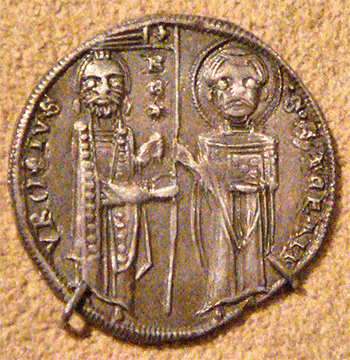
Silver dinar from the reign of Serbian king Stefan Uroš I
Conclusion
The names of certain currencies around the world serve as a testament to the historical importance of silver as money. From the Mexican Peso to the Pound Sterling, these currency names harken back to a time when silver held significant value and was widely used as an international trading currency.
While the use of physical silver as currency has diminished over time and the international Silver Standard (and also the Gold Standard) is but a distant memory, these names continue to remind us of the enduring legacy of silver and precious metals as a medium of exchange. They link to our monetary past and bring to remembrance the rich history and cultural significance associated with silver money. As we move forward in the digital age, it is fascinating to recognize the influence of silver on our currency names, preserving the memory of its once-dominant role in shaping the global economy.
